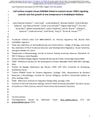Search
forLearn
5 / 15 resultslearn Osteopontin
signaling protein that, when suppressed, may grow hair by reducing inflammation and stem cell loss
learn Vascular Endothelial Growth Factor
learn Dutasteride
Heavy duty finasteride that comes with higher risks, but scalp injections seem safe and are gaining popularity
learn Stem Cell Factor
Research
5 / 1000+ results
research Deciphering the Molecular Mechanisms of Stem Cell Dynamics in Hair Follicle Regeneration
Different stem cells are key for hair growth and health, and understanding their regulation could help treat hair loss.
research The Structure and Organization of Lanceolate Mechanosensory Complexes at Mouse Hair Follicles
Lanceolate complexes in mouse hair follicles are essential for touch and depend on specific cells for maintenance and regeneration.

research Characterization of the Serotoninergic System in the C57BL/6 Mouse Skin
Mouse skin can produce and process serotonin, with variations depending on hair cycle, body location, and mouse strain.

research Cell Surface Receptor Kinase FERONIA Linked to Nutrient Sensor TORC Signaling Controls Root Hair Growth at Low Temperature Linked to Low Nitrate in Arabidopsis Thaliana
A protein called FERONIA helps control root hair growth in response to cold and low nitrogen by activating nutrient-sensing pathways in a plant called Arabidopsis.

research NAC1 Directs CEP1-CEP3 Peptidase Expression and Modulates Root Hair Growth in Arabidopsis
NAC1 controls certain enzymes that reduce root hair growth in Arabidopsis.
Community Join
5 / 616 resultscommunity Fats on your Head to Stop Hair Loss?
The conversation discusses the potential of long-chain unsaturated fatty acids, like oleic and linoleic acid, as an additional treatment for hair loss, which may inhibit the enzyme responsible for converting testosterone to DHT and promote hair growth. Users humorously suggest using oils topically and discuss other hair loss treatments, but the main focus is on the science behind fatty acids and their role in hair health.
community Topical T3 study - 1000% Growth. Anyone tried it?
The conversation discusses using T3 (triiodothyronine) as a topical treatment for hair growth, with some users noting it showed promising results in studies but lacked follow-up. Users express interest in trying T3 due to its potential effectiveness compared to Minoxidil.

community Compressed part of research of theory of androgenic/anabolitic balance. AGA h-responders analytic. Theory of physio-metabolitic method of anti AGA treatment
The treatment for androgenetic alopecia involves using finasteride and minoxidil with intense exercise and cold exposure to boost metabolism and reduce androgenic effects, potentially leading to hair regrowth. This approach may activate biological pathways for improved hair and overall health.
community The Real Cause Of Androgenetic Alopecia
Androgenetic alopecia is caused by DHT affecting hair growth. Finasteride and minoxidil are used to manage hair loss by blocking DHT and promoting hair growth.
community Dutasteride SAVES your hair follicles: MAJOR BS on people who say it destroyed their hair permanently.
The conversation discusses the effectiveness of hair loss treatments, specifically finasteride and dutasteride. The conclusion is that dutasteride significantly reduces DHT levels and may be more effective than finasteride for long-term hair retention, with some users reporting personal experiences and side effects.